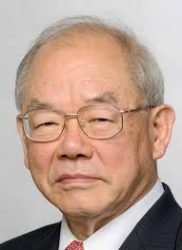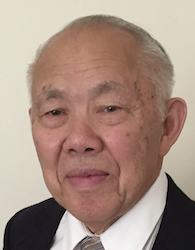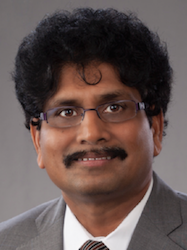Design and Design Thinking in Advancing Humanities and Social Sciences in the 21st Century
Since the Industrial Revolution (IR), science and technology have advanced at an ever-accelerating rate. In mere 250 years since IR, advances in science and technology have changed nearly all aspects of humanity. Before IR, people and animals were used as the primary source of power and energy. After IR, steam engines and other power sources replaced human and animal power, which ultimately changed the economic and political structure of many nations and the world. Now, the world is undergoing socio-economic transformation due to information technology and will soon enter the age of biological revolution. These and other advances in science and technology are likely to accelerate, creating both opportunities and some unanticipated risks to humanity. To ascertain that the technological changes result in positive outcomes for humanity and society, more research in humanities and social sciences is needed so as to complement the advances being made in natural science and technology. The question raised in this presentation is: “Can AxiomaticDesign and design thinkingbe applied in the fields of humanities and social sciences so as to create imaginative societal solutions in the technology era?” Design examples are given that show how AD can be applied in non-technical fields.
 Professor Nam Suh began his career at MIT in 1970, where he was the Ralph E. & Eloise F. Cross Professor, Director of the Park Center for Complex Systems (formerly the Manufacturing Institute), and the Head of the Department of Mechanical Engineering for ten years from 1991 to 2001. He was also the Founding Director of the MIT Laboratory for Manufacturing and Productivity (1977–1984), the Founder and Director of the MIT-Industry Polymer Processing Program (1973–1984), Head of the Mechanics and Material Division of the Mechanical Engineering Department (1975-1977), and a member of the Engineering Council of MIT (1980–1984 and 1991–2001). In October 1984, Suh took a leave of absence from MIT to accept a Presidential Appointment at the National Science Foundation where he was in charge of engineering. President Ronald Reagan appointed him to this position and the U.S. Senate confirmed his appointment. During his tenure at NSF, he created a new direction for the Engineering Directorate and introduced a new organizational program structure for supporting engineering research in order to strengthen engineering education and research and “to insure that the United States will occupy a leadership position in engineering well into the 21st century.” He returned to MIT in January 1988. Suh was named president of KAIST in June 2006, and was re-elected to his position on 14 July 2010. He is also the Ralph E. & Eloise F. Cross Professor, Emeritus, M.I.T. As the President of KAIST, he provided framework for two large-scale systems, On-Line Electric Vehicle (OLEV) and Mobile Harbor.During his term of office, he innovated tenure review system for professors, provided more chances in admission for the students from non-special-purposed high schools, and obliged English lecture for all courses. He also contributed to improve major educational indices of KAIST in terms of world university ranking and the reserved amount of donations.
Professor Nam Suh began his career at MIT in 1970, where he was the Ralph E. & Eloise F. Cross Professor, Director of the Park Center for Complex Systems (formerly the Manufacturing Institute), and the Head of the Department of Mechanical Engineering for ten years from 1991 to 2001. He was also the Founding Director of the MIT Laboratory for Manufacturing and Productivity (1977–1984), the Founder and Director of the MIT-Industry Polymer Processing Program (1973–1984), Head of the Mechanics and Material Division of the Mechanical Engineering Department (1975-1977), and a member of the Engineering Council of MIT (1980–1984 and 1991–2001). In October 1984, Suh took a leave of absence from MIT to accept a Presidential Appointment at the National Science Foundation where he was in charge of engineering. President Ronald Reagan appointed him to this position and the U.S. Senate confirmed his appointment. During his tenure at NSF, he created a new direction for the Engineering Directorate and introduced a new organizational program structure for supporting engineering research in order to strengthen engineering education and research and “to insure that the United States will occupy a leadership position in engineering well into the 21st century.” He returned to MIT in January 1988. Suh was named president of KAIST in June 2006, and was re-elected to his position on 14 July 2010. He is also the Ralph E. & Eloise F. Cross Professor, Emeritus, M.I.T. As the President of KAIST, he provided framework for two large-scale systems, On-Line Electric Vehicle (OLEV) and Mobile Harbor.During his term of office, he innovated tenure review system for professors, provided more chances in admission for the students from non-special-purposed high schools, and obliged English lecture for all courses. He also contributed to improve major educational indices of KAIST in terms of world university ranking and the reserved amount of donations.
Enhancing Prosthetic Musculotendinous Proprioception utilizing Multidisciplinary Artificially Intelligent Learning Approach
Historically, research shows analysis, characterization, and classification of complex heterogeneous non-linear systems and interactions have been difficult to accurately understand and effectively model. Advanced Biophysical and Biomechanical prosthesis research shows that development of patient specific physiologically meaningful musculotendinous proprioception would generate a marked impact on reflex control, fine volitional motor control, and overall user experience. Recent advances in Artificial Intelligence are benefitting disciplines struggling with learning from rapid increasing data volume, velocity, and complexity. Research shows complexity reducing axiomatic design benefitting medical devices, but surprisingly not prosthetics. Therefore, we propose a multidisciplinary approach to potentially enhance prosthetic proprioception by combining AI adaptive learning, axiomatic design complexity reduction techniques applied to real-time classification of high volume prosthetic usage characteristics.
 Dr. John N. Carbone has served Raytheon Company and the defense industry for ~30 years. Currently, Dr. Carbone serves as Senior Director, Technical Solutions and scientific advisor to Forcepoint, LLC Global Governments and Critical Infrastructure division. He served as Chief Science Advisor and Raytheon Engineering Fellow within the Intelligence, Information and Services (IIS) Division and as Product Area Technology Director and Chief Engineer for Innovation. Dr. Carbone has also served in various Chief Engineer, System, Software Architect Roles and as Chief Data Architect/Scientist for major Cloud programs.
Dr. John N. Carbone has served Raytheon Company and the defense industry for ~30 years. Currently, Dr. Carbone serves as Senior Director, Technical Solutions and scientific advisor to Forcepoint, LLC Global Governments and Critical Infrastructure division. He served as Chief Science Advisor and Raytheon Engineering Fellow within the Intelligence, Information and Services (IIS) Division and as Product Area Technology Director and Chief Engineer for Innovation. Dr. Carbone has also served in various Chief Engineer, System, Software Architect Roles and as Chief Data Architect/Scientist for major Cloud programs.
Dr. Carbone received his undergraduate Bachelor of Science degree in Computer Science from Baylor University, Masters of Engineering from Texas Tech University, Masters Equivalent in Software and Systems Engineering from University of Texas at Austin, and his PhD in Mechanical Engineering at Texas Tech University with focus on enhancing information theory research by combining cognition based frameworks and processes using adaptations of multi-dimensional space-time relationship mechanics.
Dr. Carbone began his career developing real-time embedded secure voice, and data communications solutions for satellite tracking and switching systems. Subsequently, Dr. Carbone has been forging bridges between High Performance Computing and Big Data architectures within distributed enterprise software engineering for ~17 years. During this tenure, Dr. Carbone was instrumental in providing architecture, design, implementation, and fielding of software systems which have led to the development of a number of strategic ISR programs considered paradigm shifts for the Department of Defense and Intelligence Community.
Dr. Carbone has submitted and received national/international software patents, and continuously publishes and edits scientific content for books, journals, conferences and symposia. Topics include dynamic discovery, dynamically provisionable workflow of multiple disparate static and streaming data sources, geospatial intelligence enterprise systems, Big Data and Analytics, Cyber Security, disruption tolerant networking technology, and cognitive computing based frameworks for enhancing decision making of self-learning autonomous systems. Recent book publishing efforts for Elsevier include Mining Big Data to Improve National Security. Recent Springer Scientific published books include topics on Multi-Disciplinary Systems Engineering, Artificial Cognition Architectures, Applied Cyber Physical Systems and Artificial Psychology.
Lastly, Dr. Carbone’s academic and professional society efforts include teaching graduate level Artificial Intelligence System Design at Southern Methodist University, and serving on Baylor University, Texas Tech University and Texas A&M Commerce Computer Science and Cyber Security Boards. Additionally, he serves as a Board Member for the Journal of Integrated Design and Process Science (JIDPS), Society of Design and Process Science (SDPS) ~21 years, has been a member of the Association for Computing Machinery (ACM) and past VP for development of the Software Engineering Society (SES). His responsibilities have included developing lasting relationships between academia and industry and jointly developing transformational K-20 curriculum for education including how to teach computational thinking and Science, Technology, Engineering, and Math (STEM).

Graduated from Baylor University in December 2016 and currently working as a scribe at Methodist-Richardson hospital. Served as Treasurer and Chief Editor of a Baylor University newspaper, volunteered for Gentiva Hospice Care, performed research for the COR medical database, and authored three fiction novels.
Application of axiomatic design to the design of automobile parts
Axiomatic design is applied to the practical design of automobile parts such as the suspension system and cooling system. The original axiomatic design theory without modification is directly utilized to analyze the current systems. Functional requirements and design parameters are defined, and design matrices are established. The decomposition process is employed to find the hierarchy of the design process. Some coupled aspects are found. Due to the sponsor’s request, trial to find a new design is not performed. Instead, the coupled process is reported to the practitioners so that they could be alert to the coupled parts. The order of the design process is defined for the design of the automobile parts. After the design hierarchy is made, the design structure matrix (DSM) method is applied to the modular design of the parts. The experience of the application is discussed.
 Professor Gyung-Jin (GJ) Park graduated from the University of Iowa in 1986 with a Ph.D. degree in Mechanical Engineering. He is teaching in the Department of Mechanical Engineering at Hanyang University located in Ansan City, Korea. His academic interests and technical expertise are in the area of axiomatic design for conceptual design, design optimization for detailed design, structural optimization, etc. In his career, he was an assistant professor at Purdue University at Indianapolis for two years, and a senior engineer at EDS/GM for a year. He was an adjunct professor at KAIST (2007-2011). He has done pioneering works in application of axiomatic design and the Equivalent Static Loads Method for structural optimization. He is the author of 3 books, 1 book chapter, 122 international journal papers, 137 Korean journal papers, and 264 international and domestic conference papers. He has 4 international patents and 16 Korean patents. He is a member of the editorial board of international academic journals.
Professor Gyung-Jin (GJ) Park graduated from the University of Iowa in 1986 with a Ph.D. degree in Mechanical Engineering. He is teaching in the Department of Mechanical Engineering at Hanyang University located in Ansan City, Korea. His academic interests and technical expertise are in the area of axiomatic design for conceptual design, design optimization for detailed design, structural optimization, etc. In his career, he was an assistant professor at Purdue University at Indianapolis for two years, and a senior engineer at EDS/GM for a year. He was an adjunct professor at KAIST (2007-2011). He has done pioneering works in application of axiomatic design and the Equivalent Static Loads Method for structural optimization. He is the author of 3 books, 1 book chapter, 122 international journal papers, 137 Korean journal papers, and 264 international and domestic conference papers. He has 4 international patents and 16 Korean patents. He is a member of the editorial board of international academic journals.
Hubcap and ignition switch designs – case studies in Independence Axiom
Independence Axiom offers designers a guide to good design. It declares that the design parameters (DPs) conceived for a good design must maintain the independence of the design functional requirements (FRs). Specifically, by relating FRs to DPs through a design matrix [DM] with elements ?FRi/?DPj, Independence Axiom declares that only designs with diagonal or triangular design matrix can maintain the functional independence of FRs; and that they should be the only acceptable ones.
Starting with the formal definition of functional independence, we derive the criterion for functional independence of FRs as the Jacobian determinant | J | ? 0; where the Jacobian matrix [ J ] is shown to be identically equal to [DM]. We further show that if and only if | J | ? 0 can the design FRs achieve their target values. Thus the criterion | J | ? 0 substantiates the declaration of Independence Axiom since determinant of a diagonal or triangular design matrix is not equal to zero. It serves as the mathematical basis for teaching and implementing Independence Axiom in design.
Two case studies are presented to illustrate the implementation of Independence Axiom via the Jacobian determinant | J |.
 Dr. Oh received his BSME from the University of the Philippines, Quezon, 1960; MSME from Purdue University, West Lafayette, 1962 and Ph. D. from University of California, Berkeley, 1967. After a year of postdoctoral fellowship at UC Berkeley, Dr. Oh joined General Motors (GM) Research Laboratories in 1969 andspent the next 19 years doing R & D in machining of brittle car components; in fracture mechanics application for fatigue prediction of spot welds and automotive rubber components; in sensor and signal processing for engine knock detection and in metal forming of car body panels. In 1985, Dr. Oh was called into the GM Car Divisions to deal with quality crisis GM was facing, thus begun his lifelong endeavor at quality. He worked at various stages of quality: as a field engineer working on reliability of automotive products in the field; as a plant engineer solving assembly quality in the automotive plants; as a development engineer developing theory and application of quality methods to designs – robust design and axiomatic design. In 1996, he joined Silicon Valley Group, a semiconductor equipment manufacturer, as Corporate Vice President in Quality and Productivity. In this position, he worked on the highest stage of quality – the deployment of quality initiatives throughout a corporation. In 1996 thru 2006, he was invited as Senior Lecturer in MIT Mechanical Department to share his industrial experience with the students. From 2006 to the present, he was associated with MIT Park Center for Complex System as Research Affiliate. Dr. Oh teaches quality methods — robust and axiomatic design —always through real life problems and case studies.
Dr. Oh received his BSME from the University of the Philippines, Quezon, 1960; MSME from Purdue University, West Lafayette, 1962 and Ph. D. from University of California, Berkeley, 1967. After a year of postdoctoral fellowship at UC Berkeley, Dr. Oh joined General Motors (GM) Research Laboratories in 1969 andspent the next 19 years doing R & D in machining of brittle car components; in fracture mechanics application for fatigue prediction of spot welds and automotive rubber components; in sensor and signal processing for engine knock detection and in metal forming of car body panels. In 1985, Dr. Oh was called into the GM Car Divisions to deal with quality crisis GM was facing, thus begun his lifelong endeavor at quality. He worked at various stages of quality: as a field engineer working on reliability of automotive products in the field; as a plant engineer solving assembly quality in the automotive plants; as a development engineer developing theory and application of quality methods to designs – robust design and axiomatic design. In 1996, he joined Silicon Valley Group, a semiconductor equipment manufacturer, as Corporate Vice President in Quality and Productivity. In this position, he worked on the highest stage of quality – the deployment of quality initiatives throughout a corporation. In 1996 thru 2006, he was invited as Senior Lecturer in MIT Mechanical Department to share his industrial experience with the students. From 2006 to the present, he was associated with MIT Park Center for Complex System as Research Affiliate. Dr. Oh teaches quality methods — robust and axiomatic design —always through real life problems and case studies.
Importance of Axiomatic Design Principles in Metrics Management and Analytics Engineering Operations
As we know it is important to define functional requirements (“whats”) and corresponding design parameters (“hows”) in a systematic and a scientific fashion to avoid complexities at the later stage of a design activity. Equally important is identifying suitable metrics for measuring FRs and DPs. The accuracy of these metrics is so important to make sure that desired outcome are achieved. In this presentation, we will discuss about importance of managing metrics and how decomposition principle is helpful in managing and evaluating metrics. The proposed metrics management approach helps evaluate ?performance levels of processes, systems and models, including artificial intelligence and machine learning approaches. We will also discuss about the quality index that will be useful in measuring performance levels and its relation to information axiom.
 Rajesh Jugulum, Ph.D., is Informatics Director heading Analytics Engineering CoE at Cigna. Prior to joining Cigna, he held executive positions in the areas of data management and process engineering at Citi Group and Bank of America. Rajesh completed his Ph.D. under the guidance of Dr. Genichi Taguchi. Before joining financial industry, Rajesh was with MIT, where he was involved in research and teaching. He taught Axiomatic design course with Prof. Nam Suh at MIT. Currently, he also teaches at Northeastern University, Boston. Rajesh is the author/co-author of several papers and five books including books on robust quality, data quality and design for lean six sigma. Rajesh is an ASQ Fellow and his other honors include ASQ’s Feigenbaum medal and International Technology Institute’s Rockwell medal.
Rajesh Jugulum, Ph.D., is Informatics Director heading Analytics Engineering CoE at Cigna. Prior to joining Cigna, he held executive positions in the areas of data management and process engineering at Citi Group and Bank of America. Rajesh completed his Ph.D. under the guidance of Dr. Genichi Taguchi. Before joining financial industry, Rajesh was with MIT, where he was involved in research and teaching. He taught Axiomatic design course with Prof. Nam Suh at MIT. Currently, he also teaches at Northeastern University, Boston. Rajesh is the author/co-author of several papers and five books including books on robust quality, data quality and design for lean six sigma. Rajesh is an ASQ Fellow and his other honors include ASQ’s Feigenbaum medal and International Technology Institute’s Rockwell medal.
